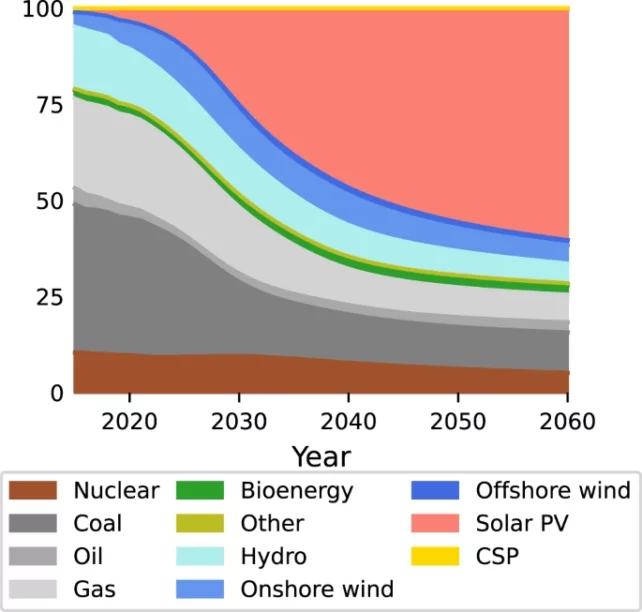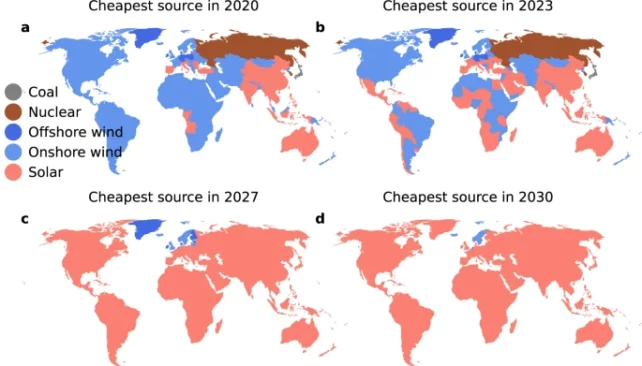Products You May Like
After years of policymakers push-starting the solar power sector, its engines may finally be rolling on their own.
Researchers in the UK have put together three different models to track snowball events in technology and the economy, and the simulations suggest solar power is well on its way to becoming the world’s main source of energy.
Even without further governmental incentives, like a carbon tax, the lead author of the paper, climatologist Femke Nijsse from the University of Exeter, predicts that “solar PV will dominate the global energy mix by the middle of this century”.
Solar power has been building momentum for years. In 2016, this renewable form of energy became the cheapest energy source in more than 60 countries.
By 2020, the International Energy Agency announced that solar energy was officially the cheapest electricity in history – less expensive than both coal and gas in most major countries.
If costs keep dropping at the same rate, Nijsse and colleagues think solar power could undercut all other energy alternatives within just a decade or two.
In 2020, fossil fuels produced over 60 percent of electricity, globally. By 2050, the new models predict that number will drop to 21 percent. Solar power, by comparison, will be responsible for 56 percent of electricity production worldwide.
“Were that to be the case, a renewables tipping point in the power sector could be imminent or even already have been passed, and the policy and finance spheres should prepare for a rapid disruptive transition,” the team writes.

To search for that tipping point, researchers ran a series of simulations based on interactions between global energy, technology, and the economy.
In more than 70 percent of the simulations, solar energy made up half the world’s electricity generation by 2050.
“Due to the reinforcing co-evolution of technology costs and deployment,” the researchers write, “our analysis establishes quantitative empirical evidence, from current and historical data trends, that a solar energy tipping point is likely to have passed.”
“This suggests that solar dominance is not only possible but also likely,” they add.
If that truly is the case, then instead of governments offering more incentives for solar energy, Nijsse and colleagues argue that the world should now focus on clearing the road for solar – to make the ‘inevitable’ transition as smooth as possible.

The main barriers to the technology reigning supreme include a lack of funding in low-income countries, a balanced and resilient power grid, increased reliance on precious metals, like aluminum, and political resistance from the declining fossil fuel industry.
This last point is particularly important as there is no guarantee that solar energy dominance will ensure a zero-carbon system.
While Nijsse and team argue that “fossil fuel-dominated projection baselines are not realistic anymore”, there is a very real chance that coal and gas find a way to stick around.
“We conclude that achieving zero-carbon power systems likely requires policies of a different kind than have traditionally been discussed by the energy modeling community,” the researchers write.
“The carbon price required to achieve cost break-even between renewables and fossil fuels may soon be zero. Instead, it is policies that address the above barriers… that may enable success in reaching net-zero energy emissions.”
The study was published in Nature Communications.
